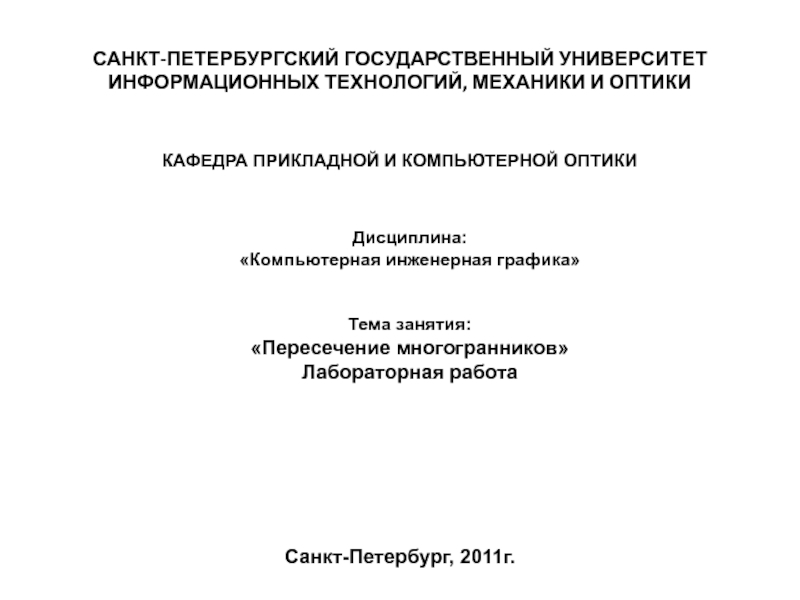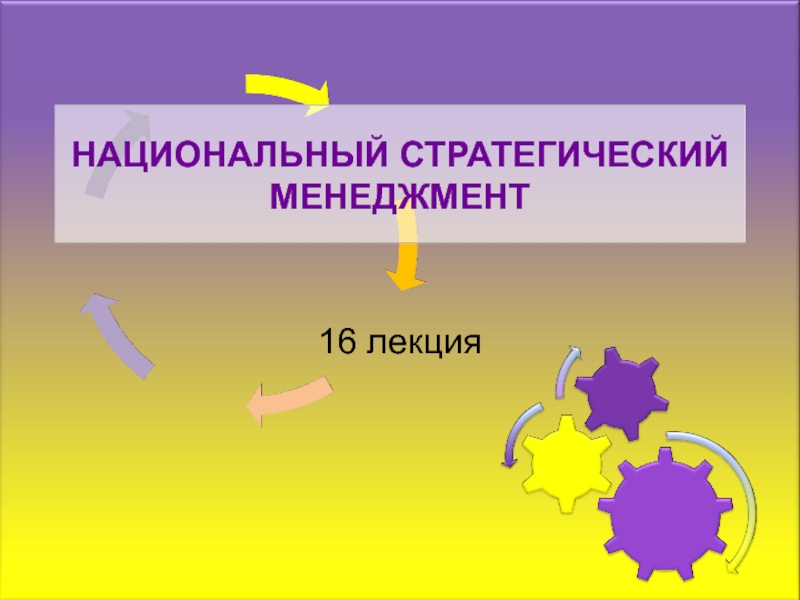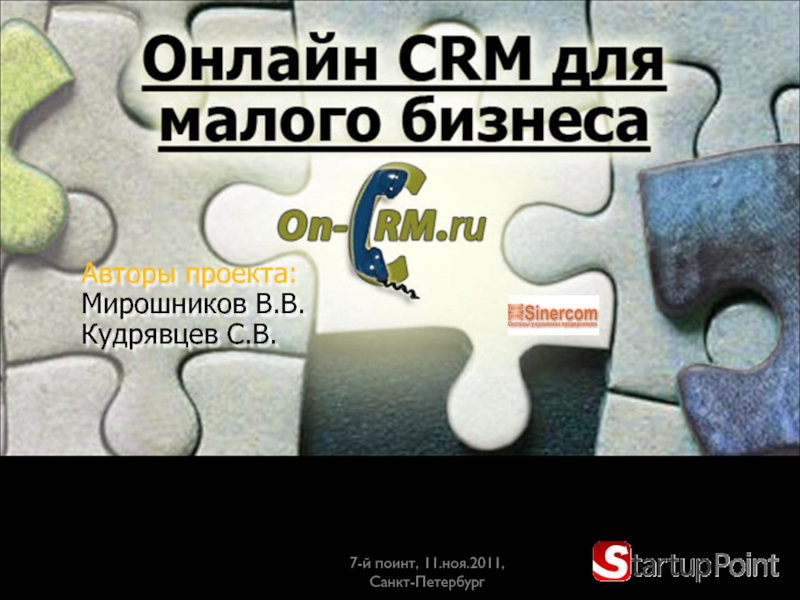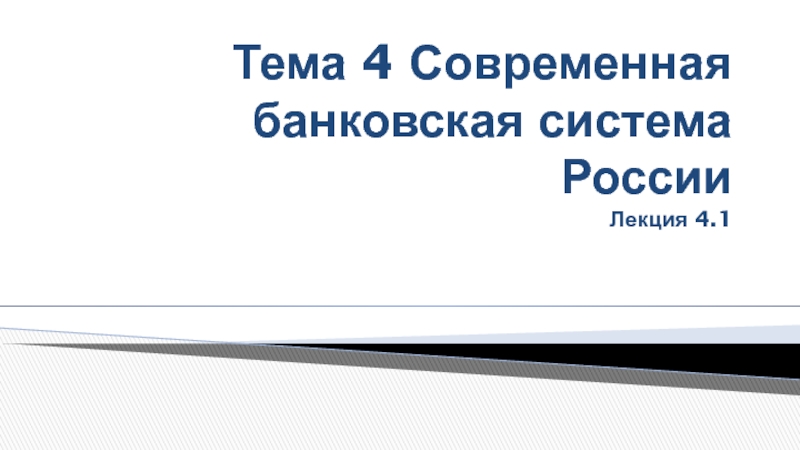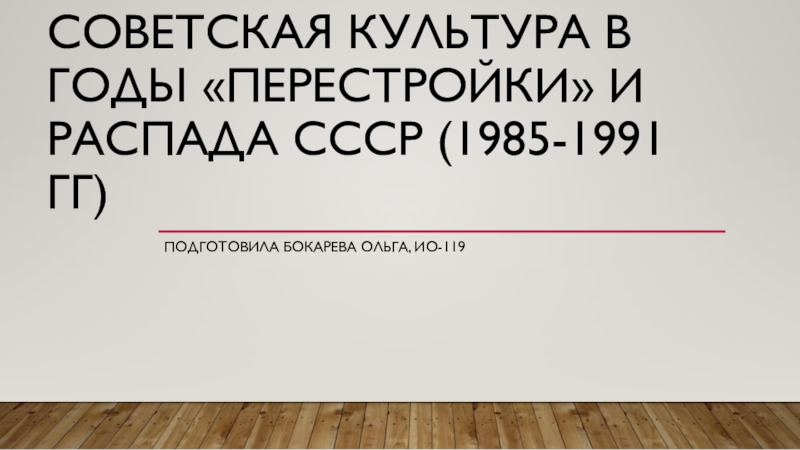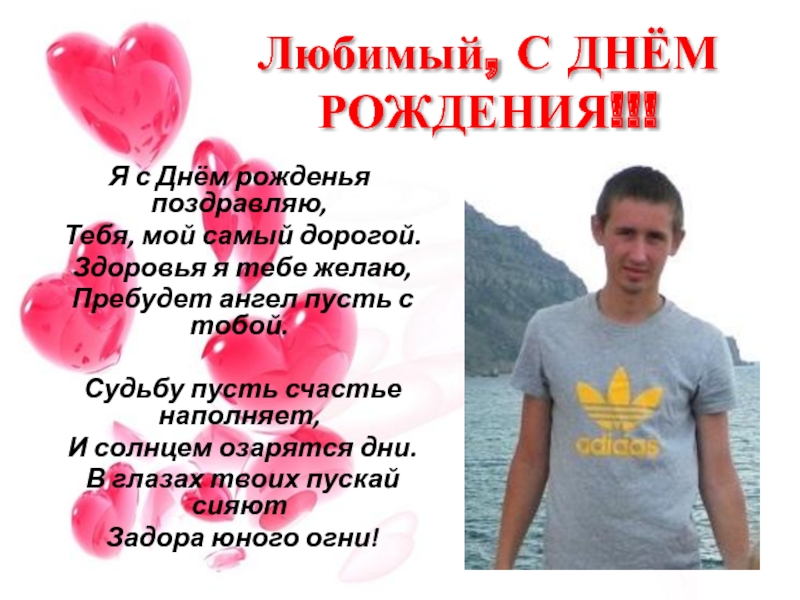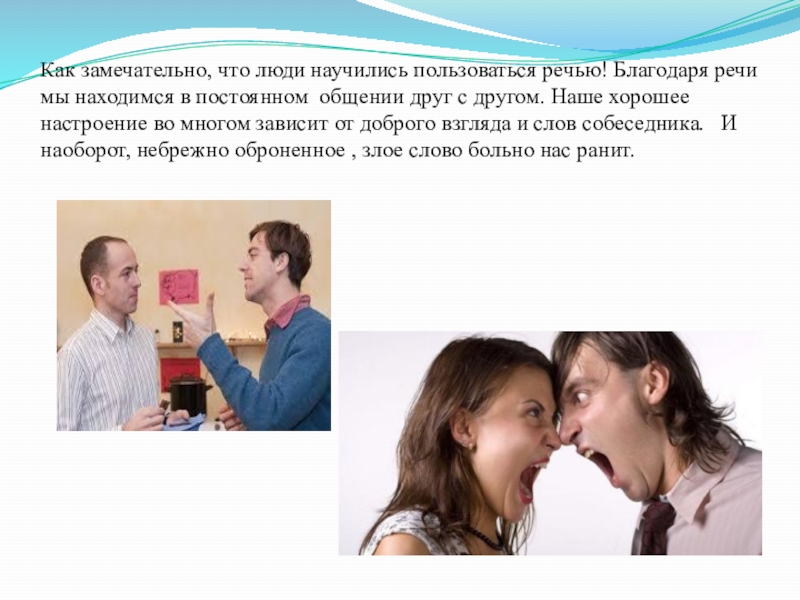Слайд 1Welcome to
The use of the pictures in this module has
been kindly permitted by artists and copyright holders, respectively. For
details (artist, title), please refer to the end of this presentation.
10/13
© Moritz, Köther & Schilling
www.uke.de/borderline
Metacognitive Training
for Borderline Personality Disorder
(B-MCT)
If there is no new participant in the group, you can skip slides 1-13 (start at slide 14)!
Слайд 2Metacognitive Training (MCT)
???
Слайд 3
meta
derived from Greek, means “about”
Metacognitive Training (MCT)
Слайд 4
meta
derived from Greek, means “about”
cognition
derived from Latin, means
“thinking”
Metacognitive Training (MCT)
Слайд 5
meta
derived from Greek, means “about”
cognition
derived from Latin, means
“thinking”
metacognition
“thinking about thinking”
Metacognitive Training (MCT)
Слайд 6
Metacognitive training for BPD (B-MCT) is a therapeutic approach that
deals with thoughts and thought processes.
The training is designed
to …
impart knowledge about your own thought processes and
make you aware of typical thought distortions and how to change these
B-MCT
Thought distortion: unfavorable way of taking in and processing information from the environment that can lead to developing or maintaining mental problems (e.g., always blaming only oneself).
Слайд 7The neighbors in the apartment above are having a noisy
party again.
What possible thoughts can arise in reaction?
One event –
many possible emotions…
What leads to the different reactions?
Слайд 8One event – many possible emotions…
What leads to the different
reactions?
Possible thoughts
response / thoughts?
response / thoughts?
response / thoughts?
The neighbors in
the apartment above are having a noisy party again.
Слайд 9One event – many possible emotions…
What leads to the different
reactions?
Possible thoughts
Bewertung / Gedanken?
“Well, it‘s the weekend and it’s not
like I’ve never partied. All right, I’ll just stay up a bit longer.”
“I’ve had it with them! I’m trying to get a good night’s sleep! I bet they’re doing this on purpose!”
The neighbors in the apartment above are having a noisy party again.
“They don’t give a damn about me. They didn’t even invite me. Am I really that big a bore?”
Слайд 10One event – many possible emotions…
What leads to the different
reactions?
Possible thoughts
Bewertung / Gedanken?
“Well, it‘s the weekend and it’s not
like I’ve never partied. All right, I’ll just stay up a bit longer.”
“I’ve had it with them! I’m trying to get a good night’s sleep! I bet they’re doing this on purpose!”
The neighbors in the apartment above are having a noisy party again.
“They don’t give a damn about me. They didn’t even invite me. Am I really that big a bore?”
What possible emotions may arise along with these thoughts?
Слайд 11One event – many possible emotions…
What leads to the different
reactions?
Possible thoughts
angry
relaxed
sad
Possible emotions
The neighbors in the apartment above are having
a noisy party again.
“Well, it‘s the weekend and it’s not like I’ve never partied. All right, I’ll just stay up a bit longer.”
“I’ve had it with them! I’m trying to get a good night’s sleep! I bet they’re doing this on purpose!”
“They don’t give a damn about me. They didn’t even invite me. Am I really that big a bore?”
Слайд 12One event – many possible emotions…
What leads to the different
reactions?
Possible thoughts
angry
relaxed
sad
Possible emotions
What possible behavioral reactions could result in each
case?
The neighbors in the apartment above are having a noisy party again.
“Well, it‘s the weekend and it’s not like I’ve never partied. All right, I’ll just stay up a bit longer.”
“I’ve had it with them! I’m trying to get a good night’s sleep! I bet they’re doing this on purpose!”
“They don’t give a damn about me. They didn’t even invite me. Am I really that big a bore?”
Слайд 13One event – many possible emotions…
What leads to the different
reactions?
Possible thoughts
angry
relaxed
sad
Possible emotions
knock at the door & threaten to call
the police
stay calm, sleep with earplugs
brood & therefore not find peace
The neighbors in the apartment above are having a noisy party again.
“Well, it‘s the weekend and it’s not like I’ve never partied. All right, I’ll just stay up a bit longer.”
“I’ve had it with them! I’m trying to get a good night’s sleep! I bet they’re doing this on purpose!”
“They don’t give a damn about me. They didn’t even invite me. Am I really that big a bore?”
Слайд 14Training module:
Attributional Style
Welcome to
The use of the pictures in this
module has been kindly permitted by artists and copyright holders,
respectively. For details (artist, title), please refer to the end of this presentation.
10/13
© Moritz, Köther & Schilling
www.uke.de/borderline
Слайд 16
= our own explanation of why a situation happens.
(e.g., “My friend invited me to the movies because she
likes me!”)
Attribution
Слайд 17
= our own explanation of why a situation happens.
(e.g., “My friend invited me to the movies because she
likes me!”)
We often fail to see that the same event can have very different causes.
Attribution
Слайд 18
= our own explanation of why a situation happens.
(e.g., “My friend invited me to the movies because she
likes me!”)
We often fail to see that the same event can have very different causes.
What causes could have contributed to the following situation?
A friend is late for a meeting with you.
Attribution
Слайд 19???
Why does your friend keep you waiting?
Possible types of attribution…
Attribution
Слайд 20
Why does your friend keep you waiting?
Possible types of attribution…
“He
doesn't care enough about me. He wouldn’t have dared to
do this with someone else.”
“He is forgetful – he got the time wrong.”
“His car broke down.”
Attribution
Слайд 21
Why does your friend keep you waiting?
Possible types of attribution…
…to
oneself “He doesn't care enough about me.”
…to
others “He is forgetful.”
…to chance or the situation “His car broke down.”
Attribution
Слайд 22
Events can have quite different causes.
In addition, several contributing
factors are often involved at the same time.
However many people
consider only one-sided explanations (e.g. only blaming others rather than oneself or vice versa).
Attribution
Слайд 23
Reasons...
… oneself
… others
… chance or the situation
“You’re discharged from
the hospital but don’t feel any better.”
Слайд 24
Reasons...
... oneself:
(can be changed)
I wasn’t motivated enough to cooperate.
I
didn’t believe in recovery.
(difficult to change)
I am incurable.
I just have
bad genes.
... others:
The doctors here have a bad reputation.
The hospital staff should have made more effort and spent more time with me.
... chance or the situation:
I would have recovered better if I hadn’t shared a room with 6 other patients.
If the hospital was better equipped, I would be recovered.
Sometimes the recovery process takes time before you can see results.
“You’re discharged from the hospital but don’t feel any better.”
Слайд 25
Reasons...
... oneself:
(can be changed)
I wasn’t motivated enough to cooperate.
I
didn’t believe in recovery.
(difficult to change)
I am incurable.
I just have
bad genes.
... others:
The doctors here have a bad reputation.
The hospital staff should have made more effort and spent more time with me.
... chance or the situation:
I would have recovered better if I hadn’t shared a room with 6 other patients.
If the hospital was better equipped, I would be recovered.
Sometimes the recovery process takes time before you can see results.
“You’re discharged from the hospital but don’t feel any better.”
Caution: one-sided explanations!
Слайд 26
???
???
???
Now think of balanced responses that involve several causes (combination
of “others”, “situation”, and “self”)
“You’re discharged from the hospital but
don’t feel any better.”
Слайд 27
“The staff didn’t have much time, but I could have
requested more support, and should have attended group sessions more
frequently. That might be why my stay wasn’t as successful as it could have been.”
“Maybe I should be more patient regarding my recovery. I’m confident that in the future I can be helped by competent staff.”
Now think of balanced responses that involve several causes (combination of “others”, “situation”, and “self”)
“You’re discharged from the hospital but don’t feel any better.”
Слайд 28Effects of certain attributional styles on positive events!
“That’s a great
dress you’re wearing!”
“ plaid dress“ by dunikowski
Слайд 29Effects of certain attributional styles on positive events!
“That’s a great
dress you’re wearing!”
“ plaid dress“ by dunikowski
Слайд 30Effects of certain attributional styles on positive events!
“That’s a great
dress you’re wearing!”
“ plaid dress“ by dunikowski
Слайд 31Effects of certain attributional styles on positive events!
“That’s a great
dress you’re wearing!”
“ plaid dress“ by dunikowski
Слайд 32Effects of certain attributional styles on positive events!
“That’s a great
dress you’re wearing!”
“ plaid dress“ by dunikowski
Слайд 33Effects of certain attributional styles on positive events!
“That’s a great
dress you’re wearing!”
“ plaid dress“ by dunikowski
Слайд 34Effects of certain attributional styles on positive events!
“That’s a great
dress you’re wearing!”
“ plaid dress“ by dunikowski
Слайд 35Effects of certain attributional styles on negative events!
You spill a
glass of wine while trying to avoid the waiter.
„Glass
of wine“ by Sh0dan
Слайд 36Effects of certain attributional styles on negative events!
You spill a
glass of wine while trying to avoid the waiter.
„Glass
of wine“ by Sh0dan
Слайд 37Effects of certain attributional styles on negative events!
You spill a
glass of wine while trying to avoid the waiter.
„Glass
of wine“ by Sh0dan
Слайд 38Effects of certain attributional styles on negative events!
You spill a
glass of wine while trying to avoid the waiter.
„Glass
of wine“ by Sh0dan
Слайд 39Effects of certain attributional styles on negative events!
You spill a
glass of wine while trying to avoid the waiter.
„Glass
of wine“ by Sh0dan
Слайд 40Effects of certain attributional styles on negative events!
You spill a
glass of wine while trying to avoid the waiter.
„Glass
of wine“ by Sh0dan
Слайд 41Effects of certain attributional styles on negative events!
You spill a
glass of wine while trying to avoid the waiter.
„Glass
of wine“ by Sh0dan
Слайд 42Why do we do this?
Studies show that many [but not
all!] people with depression tend to…
… blame themselves for failures…
…
attribute success to circumstances/chance.
This attributional style reduces self-esteem!
Слайд 43Why do we do this?
Many [but not all!] people with
BPD tend to…
… reduce situations to single causes and…
… hardly
give any regard to circumstances/chance.
They primarily blame only themselves for the occurrence of events.
Слайд 44Taking things (too) personally
„long face“ by paramitta
???
Слайд 45
= Events or the behavior of others are often
thought to have something to do with oneself, even if
they don’t.
“long face“ by paramitta
Taking things (too) personally
Слайд 46
= Events or the behavior of others are often
thought to have something to do with oneself, even if
they don’t.
Typical thoughts: ???
“long face“ by paramitta
Taking things (too) personally
Слайд 47
= Events or the behavior of others are often
thought to have something to do with oneself, even if
they don’t.
Typical thoughts: “Of course this happens to me of all people!”
“He doesn’t like me. It must be me.”
You have a distorted perception of events, feel responsible for everything and everyone, and take things too much to heart.
“long face“ by paramitta
Taking things (too) personally
Слайд 48
= Events or the behavior of others are often
thought to have something to do with oneself, even if
they don’t.
Typical thoughts: “Of course this happens to me of all people!”
“He doesn’t like me. It must be me.”
You have a distorted perception of events, feel responsible for everything and everyone, and take things too much to heart.
It is a human tendency to feel involved somehow (e.g., children feel guilty when their parents fight)
“long face“ by paramitta
Taking things (too) personally
Слайд 49Effect on behavior
“no, I'm not sad. just tired” by erix!
Слайд 50“no, I'm not sad. just tired” by erix!
Effect on behavior
Слайд 51“no, I'm not sad. just tired” by erix!
Effect on behavior
Слайд 52“no, I'm not sad. just tired” by erix!
Effect on behavior
Слайд 53“no, I'm not sad. just tired” by erix!
Effect on behavior
Слайд 54“no, I'm not sad. just tired” by erix!
Effect on behavior
Слайд 55“no, I'm not sad. just tired” by erix!
Effect on behavior
Слайд 56Don’t take everything too personally!
Try to consciously register when you
make a very personal attribution!
Could there be other explanations?
Слайд 57Don’t take everything too personally!
Try to consciously register when you
make a very personal attribution!
Could there be other explanations?
And:
If a snub really is meant personally, that reveals something about the other person as well.
Слайд 58Don’t take everything too personally!
Try to consciously register when you
make a very personal attribution!
Could there be other explanations?
And:
If a snub really is meant personally, that reveals something about the other person as well.
Put yourself in someone else’s shoes (e.g., a good friend)!
What would you think, if something similar happened to someone else?
Слайд 59Don’t take everything too personally!
Try to consciously register when you
make a very personal attribution!
Could there be other explanations?
And:
If a snub really is meant personally, that reveals something about the other person as well.
Put yourself in someone else’s shoes (e.g., a good friend)!
What would you think, if something similar happened to someone else?
Think of different possible causes of a situation.
With negative events, start with “circumstances”!
Слайд 60 Exercise: drawing pie charts
What happened?
Here’s an example of a
negative event that happened last week:
“A friend cancelled a lunch
with you that you were looking forward to a lot.”
What is the main aspect you explained the event by?
“She thinks I’m boring.”
What effects does your explanation have?
“I am sad and feel unwanted.”
“P1040284“ by schomuf
Слайд 61 Exercise: drawing pie charts
What are other and more balanced ways
of responding to the event? What percentage of the event
could you estimate as being attributable to other causes?
Try to split the pie fairly and not always take the biggest piece yourself.
Circumstances
Me
Others
“P1040284“ by schomuf
Слайд 62
The fundamental attribution error
= People in Western countries are generally
more apt to blame someone’s personal characteristics rather than situational
influences for their behavior.
Example: When someone bumps into you on the bus, you may be more apt to think the person is rude than to see that the bus is packed tightly.
Instead: look at the situation clearly
“Volle Bahn“ by jorges
Слайд 63
Study: staging of a quiz show.
The participants were randomly allocated
one of three roles: quiz show host, candidate, or spectator.
The quiz show host’s task was to think of difficult questions that “display his broad knowledge." He then had to ask the candidate these questions.
All of the participants knew that the quiz show host had been allowed to make up the questions himself.
“hier gehts zu den Fragen aller Fragen“ by gravitat-OFF
Look at the situation clearly
Слайд 64
Study: staging of a quiz show.
The participants were randomly allocated
one of three roles: quiz show host, candidate, or spectator.
The quiz show host’s task was to think of difficult questions that “display his broad knowledge." He then had to ask the candidate these questions.
All of the participants knew that the quiz show host had been allowed to make up the questions himself.
After the show, all participants were asked to judge who was smarter, the quiz show host or the candidate ???
“hier gehts zu den Fragen aller Fragen“ by gravitat-OFF
Look at the situation clearly
Слайд 65
Even though the quiz show host clearly had the advantage
because he was allowed to make up the questions himself
(situation!), both the spectators and the candidates themselves thought the host had more knowledge than the candidates.
Look at the situation clearly
“hier gehts zu den Fragen aller Fragen“ by gravitat-OFF
Слайд 66
A “fundamental attribution error” is made unconsciously and automatically!
Our attention
is limited, and we pay the most attention to fellow
humans (because they stand out the most).
It takes time and motivation to consciously control our thinking and question the mere attribution to a person.
Causes of the attribution error
Слайд 67
A “fundamental attribution error” is made unconsciously and automatically!
Our attention
is limited, and we pay the most attention to fellow
humans (because they stand out the most) rather than circumstances.
It takes time and motivation to consciously control our thinking and question the mere attribution to a person.
Causes of the attribution error
Слайд 68
A “fundamental attribution error” is made unconsciously and automatically!
Our attention
is limited, and we pay the most attention to fellow
humans (because they stand out the most) rather than circumstances.
It takes time and motivation to consciously control our thinking and question the attributions we make about a person or event.
Causes of the attribution error
Слайд 69Please think of several possible causes of the occurrence of
the particular situation.
With negative events, start with circumstances/chance!
Make yourself
aware of the possible effects of different attributions – short-term as well as long-term ones!
Exercise
In the following, you will be presented with several events.
Слайд 70Someone tells you that you look bad.
Why might the person
have said this?
To what do you primarily attribute this event?
Yourself?
Another person/other people?
Circumstances/chance?
Слайд 71A friend invites you for dinner.
What made your friend invite
you for dinner?
To what do you primarily attribute this event?
Yourself?
Another person/other people?
Circumstances/chance?
Слайд 72When your neighbor lets you hold her baby it starts
crying.
Why did the baby start crying?
To what do you primarily
attribute this event?
Yourself?
Another person/other people?
Circumstances/chance?
Слайд 73A colleague is not willing to help you with a
task.
Why does your colleague refuse to help you?
To what do
you primarily attribute this event?
Yourself?
Another person/other people?
Circumstances/chance?
Слайд 74Learning objectives:
- Attribution Module -
Transfer to everyday life
Слайд 75Learning objectives:
Always consider different possibilities. Because: Usually several factors contribute
to the occurrence of an event (myself/others/circumstances)!
- Attribution Module -
Transfer
to everyday life
Слайд 76Learning objectives:
Always consider different possibilities. Because: Usually several factors contribute
to the occurrence of an event (myself/others/circumstances)!
Draw a pie chart
and name the different pieces.
- Attribution Module -
Transfer to everyday life
Слайд 77Learning objectives:
Always consider different possibilities. Because: Usually several factors contribute
to the occurrence of an event (myself/others/circumstances)!
Draw a pie chart
and name the different pieces.
Tip: Practice “perspective-taking” (What would you think if something similar happened to someone else?)!
- Attribution Module -
Transfer to everyday life
Слайд 78
The bridge experiment (Dutton & Aron, 1974):
Scientists had a
young and pretty female student stand at the end of
a shaky rope bridge and a regular bridge.
Bridge / 橋(はし) by TANAKA Juuyoh (田中十洋)
Emotions can be falsely attributed too…
Слайд 79
The bridge experiment (Dutton & Aron, 1974):
Scientists had a
young and pretty female student stand at the end of
a shaky rope bridge and a regular bridge.
The student asked male passers-by who had already crossed the bridge to help her with her research work.
Bridge / 橋(はし) by TANAKA Juuyoh (田中十洋)
Emotions can be falsely attributed too…
Слайд 80
The bridge experiment (Dutton & Aron, 1974):
Scientists had a
young and pretty female student stand at the end of
a shaky rope bridge and a regular bridge.
The student asked male passers-by who had already crossed the bridge to help her with her research work.
After having them answer a questionnaire, the student gave the participants her private phone number and asked them to call her if they had any questions about the study.
Bridge / 橋(はし) by TANAKA Juuyoh (田中十洋)
Emotions can be falsely attributed too…
Слайд 81
Number of calls: ???
Bridge / 橋(はし) by TANAKA Juuyoh (田中十洋)
Emotions can be falsely attributed too…
Слайд 82
Number of calls:
Rope bridge: 9 of 18 men called
Stable bridge:
2 of 16 men called
Bridge / 橋(はし) by TANAKA
Juuyoh (田中十洋)
Emotions can be falsely attributed too…
Слайд 83
Number of calls:
Rope bridge: 9 of 18 men called
Stable bridge:
2 of 16 men called
Canadian scientists concluded that this is
because the men’s physical excitement (after crossing the rope bridge) due to the gaping abyss was falsely attributed to the woman’s attractiveness, and the fear/excitement was interpreted as an affection.
Bridge / 橋(はし) by TANAKA Juuyoh (田中十洋)
Emotions can be falsely attributed too…
Слайд 84
For control purposes they also had a male student stand
at the end of the two bridges.
Result: ???
Bridge / 橋(はし)
by TANAKA Juuyoh (田中十洋)
Emotions can be falsely attributed too…
Слайд 85
For control purposes they also had a male student stand
at the end of the two bridges.
Result: Only one third
each of all men were willing to accept his number at all!
Only 2 men (shaky bridge) and 1 man (stable bridge) actually called.
Bridge / 橋(はし) by TANAKA Juuyoh (田中十洋)
Emotions can be falsely attributed too…
Слайд 86
For control purposes they also had a male student stand
at the end of the two bridges.
Result: Only one third
each of all men were willing to accept his number at all!
Only 2 men (shaky bridge) and 1 man (stable bridge) actually called.
The men who called the pretty female student were probably more interested in her than the study.
Bridge / 橋(はし) by TANAKA Juuyoh (田中十洋)
Emotions can be falsely attributed too…
Слайд 87
For control purposes they also had a male student stand
at the end of the two bridges.
Result: Only one third
each of all men were willing to accept his number at all!
Only 2 men (shaky bridge) and 1 man (stable bridge) actually called.
The men who called the pretty female student were probably more interested in her than the study.
Detect external influences that artificially “heat up” your feelings (e.g., coffee and nervousness); the feeling has lost some of its power because you recognize it was exaggerated.
Bridge / 橋(はし) by TANAKA Juuyoh (田中十洋)
Emotions can be falsely attributed too…
Слайд 89© Moritz, Köther & Schilling
www.uke.de/borderline
Thank you for your attention!
Слайд 90Pictures used in this module are reproduced with indirect (creative
commons license) or direct permission of the artists listed below,
for which we would like to express our gratitude! A full list can be obtained via www.uke.de/MCT. If we have involuntarily breached copyright, please accept our apologies. In this case, we kindly ask creators for their permission to use their work under the "fair use" policy.
Die in diesem Modul verwendeten Bilder wurden mit der indirekten (creative commons Lizenz) oder direkten Zustimmung der untenstehenden Künstler reproduziert, wofür wir uns herzlich bedanken möchten! Eine vollständige Liste ist hinterlegt auf www.uke.de/MCT. Sollten wir unbeabsichtigt gegen das Urheberrecht verstoßen haben, so bitten wir dies vielmals zu entschuldigen und bitten nachträglich um die Verwendungserlaubnis.









































![Welcome to
The use of the pictures in this module has been kindly permitted by Why do we do this?Studies show that many [but not all!] Why do we do this?Studies show that many [but not all!] people with depression tend to… … blame](/img/thumbs/ee5e84e39109cb2fa334ef2f8a1df895-800x.jpg)
![Welcome to
The use of the pictures in this module has been kindly permitted by Why do we do this?Many [but not all!] people with BPD Why do we do this?Many [but not all!] people with BPD tend to…… reduce situations to single](/img/thumbs/2d8a9c4b0e490accf3422b4174a19904-800x.jpg)

















































